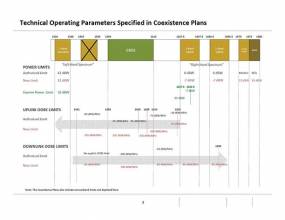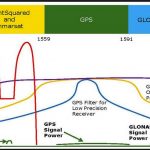In the same week conflicting court filings underscored the intractability of the fight between LightSquared and GPS receiver manufacturers.
Meanwhile, a key technical group found that aviation likely would be hampered — yet not fully protected — by exclusion zones around wireless broadband transmission towers using, as LightSquared has proposed, frequencies adjacent to GPS bands.
In the same week conflicting court filings underscored the intractability of the fight between LightSquared and GPS receiver manufacturers.
Meanwhile, a key technical group found that aviation likely would be hampered — yet not fully protected — by exclusion zones around wireless broadband transmission towers using, as LightSquared has proposed, frequencies adjacent to GPS bands.
The report was released July 21 by the Tactical Operations Committee (TOC) of the RTCA, a consensus-based organization of volunteers that develops standards for the Federal Aviation Administration (FAA).
At the FAA’s request, the TOC evaluated “the aviation safety and operational impact of proposed Exclusion Zones, which are 500 foot cylinders around GPS adjacent band transmission towers within which GPS accuracy may be compromised.”
The exclusion zone approach to addressing interference was raised in the January 20, 2012, DOT/FAA Status Report: Assessment of Compatibility of Planned LightSquared Ancillary Terrestrial Component Transmissions in the 1526-1536 MHz Band with Certified Aviation GPS Receivers. That report sprang from a spectrum fight triggered when LightSquared sought in 2010 to rezone satellite-to-ground frequencies for a terrestrial broadband network.
Tests in 2011 showed the high-powered signals would overload the vast majority of GPS receivers and the Federal Communications Commission (FCC) put the firm’s plan on indefinite hold in February 2012. LightSquared subsequently filed for bankruptcy
To help avoid such conflicts in the future the Department of Transportation (DoT) is conducting the Adjacent Band Compatibility (ABC) Assessment, an effort to inform would-be users how much power the can be emitted in neighboring frequencies without interfering with GPS receivers. The FAA is responsible for the certified-aviation portion of the study while the DoT is handling the rest.
To support the study the FAA asked the RTCA for input on three operations-related questions. Specifically the FAA sought comment on the “operational acceptability and safety implications for the proposed exclusions,” including if they were “sufficiently small so as to not impact flight safety.”
Alternatively, the agency wanted to know what exclusion zones parameters should be considered with regard to Terrain Awareness Warning System (TAWS) equipment and Helicopter TAWS, or HTAWS. It also asked about the zones with regard to unmanned aircraft.
The TOC looked at a number of different ways airspace is being used and wrote in its report that “the proposed Exclusion Zones have negative impacts to both flight safety and operations for multiple operational scenarios and multiple types of operators. This includes negatively impacting GPS-based TAWS/HTAWS alerts.”
They also noted that the zones go as low as 100 feet AGL (above ground level), though there “are some operational scenarios with negative impacts below 100 feet AGL.”
The committee further concluded that there “is no ‘one-size-fits-all’ definition of an Exclusion Zone that works everywhere in the National Airspace System (NAS).” Uses of frequencies need to be evaluated against different aviation uses “based on the proponent’s spectrum signature and density of deployment in various environments.”
In addition, there are “some safety impacts and operational limitations from exclusion zones unique to unmanned aircraft.” Specifically the committee cited the impact on geo-fencing, return to base capabilities, station keeping, and the risk of loss of equipment.
How the TOC’s inputs will inform the ABC Assessment remains unclear. A LightSquared representative, however, found reason for optimism.
“This report provides a good understanding about the issues. It does not disagree that compatible use is possible,” said Ashley Durmer, a spokesperson for LightSquared. “The report sets forth information for further analysis to look at compatibility.”
Courting Wireless Broadband
The report was released just days before a pair of court filings raised and then dashed prospects of a settlement between LightSquared and three GPS receiver manufacturers: John Deere, Garmin, and Trimble. LightSquared has sued the three and other parties, claiming they knew of plans to use the frequencies in question for a ground-based network, but did not tell LightSquared’s investors the network would overload GPS receivers.
LightSquared on July 22 filed a letter with the U.S. District Court for the Southern District of New York on saying that “LightSquared and Trimble believe there is now an opportunity for the parties to have a constructive dialogue and to engage in a process aimed at a global resolution of the pending technical issues related to the use of LightSquared spectrum that gave rise to the present disputes—including this case and ongoing proceedings before the FCC and other government agencies.”
The firm asked for a 45-day stay of discovery to facilitate discussions by freeing up the necessary experts within the different organizations.
The letter also said “Garmin and Deere have both stated that they are willing to engage in settlement discussions regarding the resolution of the disputed issues among the parties, but LightSquared does not know Garmin or Deere’s final position regarding a 45-day stay.”
Trimble confirmed they were on board.
“Trimble’s focus is on the ongoing proceedings to resolve technical issues and supports a 45-day stay so that we can commit our resources to that process without the distraction of this litigation,” said Trimble General Council Jim Kirkland in a prepared statement.
A filing the next day, however, made clear that Garmin and John Deere were not on board.
“It is important to understand,” those companies told the judge, “that what LightSquared is proposing has little to do with settlement of this action and instead relates to an effort to resolve ongoing proceedings within the purview of the FCC and other government agencies involving numerous stakeholders that are not parties to this litigation, including government agencies.”
“Although LightSquared indicates that there have been substantive discussions with Trimble concerning the outstanding FCC issues,” the two companies added, “LightSquared has yet to make any substantial proposals to Deere or Garmin.”
The judge denied the stay.
As part of its renewed initiative to gain FCC approval for its terrestrial broadband network, LightSquared has sought to entice GPS receiver manufacturers into a new round of testing and this week presented a “GPS market review” to the commission that appeared designed to downplay the utility of GPS.






